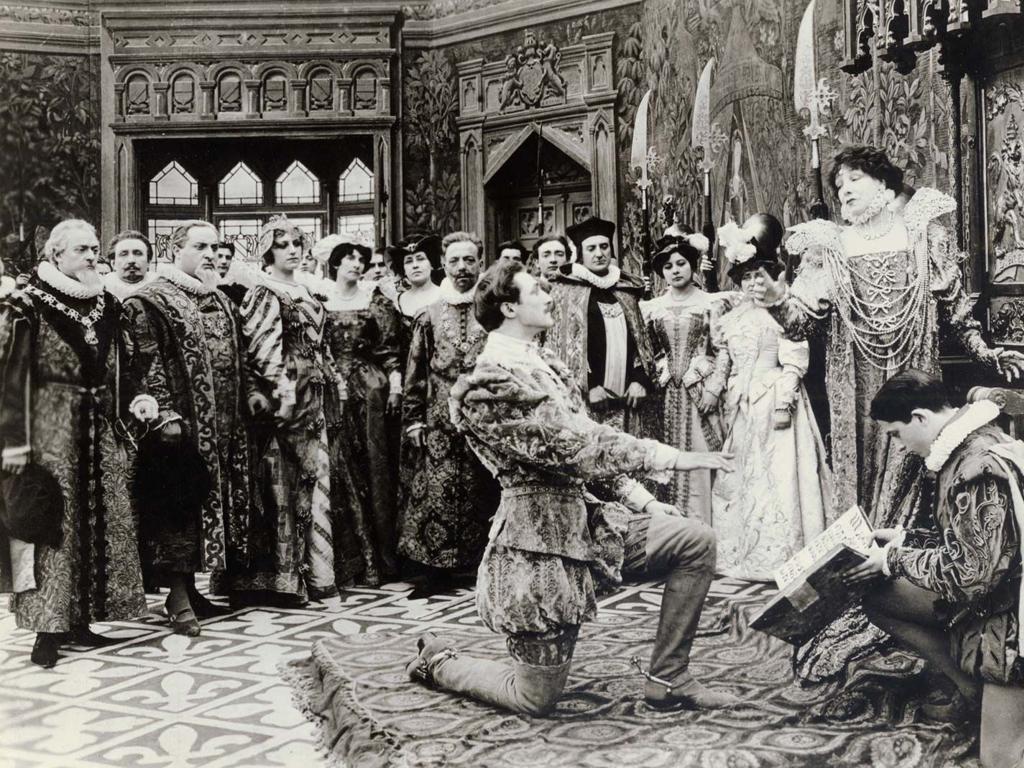The Lewis And Clark Expedition
Subject: Social studies
Grade: Fourth grade
Topic: Early 19Th Century American History
Please LOG IN to download the presentation. Access is available to registered users only.
View More Content
Introduction to the Lewis and Clark Expedition
– Welcome to Social Studies!
– Discovering the Journey
– Lewis & Clark explored unknown lands.
– Significance of the Expedition
– It mapped the West & found new resources.
– Impact on U.S. Expansion
– It helped the U.S. grow with new land.
|
Today’s class is an exciting introduction to the famous journey of Lewis and Clark, an expedition that played a crucial role in American history. Begin by welcoming the students and setting the stage for a story of adventure and discovery. Explain that this expedition was a significant event in the early 19th century that helped to map the western territories of the United States and contributed to the nation’s expansion. Highlight the importance of the expedition in understanding the natural resources and establishing American claims to these new lands. Engage the students by asking what they would expect to discover on such a journey and relate it to the explorers’ experiences.
Explorers of the Wild: Lewis and Clark
– Meet Meriwether Lewis
– Meriwether Lewis was an American explorer chosen to lead the expedition.
– Meet William Clark
– William Clark was a skilled mapmaker and outdoorsman who co-led the journey.
– Roles in the expedition
– Lewis was the leader, and Clark was the co-leader, responsible for mapping the route.
– Their teamwork as leaders
– They worked together to make decisions and guide their team through unknown lands.
|
Introduce Meriwether Lewis and William Clark as key figures in American history, emphasizing their backgrounds and the skills they brought to the expedition. Explain their roles, with Lewis as the leader appointed by President Jefferson and Clark as the co-leader, focusing on his cartography skills. Highlight their partnership and leadership, which were crucial for the success of their mission. Discuss how they had to work together to navigate uncharted territories, negotiate with Native American tribes, and document new species. Encourage students to think about the importance of teamwork and leadership in achieving great goals.
The Purpose of the Lewis and Clark Expedition
– Explore the Louisiana Purchase
– To map and learn about the new land bought from France in 1803.
– Seek a water route to the Pacific
– To find a river path connecting the east to the Pacific Ocean.
– Establish trade and U.S. presence
– To create relationships with Native Americans and show U.S. strength.
|
The Lewis and Clark Expedition had several key objectives following the Louisiana Purchase. The team was tasked with mapping the newly acquired territory and documenting its natural resources, inhabitants, and potential for settlement. Additionally, they sought a navigable water route across the continent to facilitate trade and strengthen the U.S. claim to the Pacific Northwest. Establishing trade and diplomatic relations with Native American tribes was also crucial to the mission’s success. This expedition laid the groundwork for westward expansion and had a lasting impact on the nation’s growth.
Preparation for the Lewis and Clark Expedition
– Forming the Corps of Discovery
– A group of skilled explorers chosen by Lewis and Clark
– Training for the unknown journey
– Learning survival skills and navigation
– Equipping the expedition team
– Gathering supplies and tools needed for the trip
– Anticipating possible challenges
– Considering weather, terrain, and interactions with Native Americans
|
This slide focuses on the preparation phase of the Lewis and Clark Expedition. The Corps of Discovery was a specially selected team of explorers, led by Meriwether Lewis and William Clark, tasked with exploring the newly acquired western part of the United States. Emphasize the extensive training in survival, scientific observation, and navigation that the team underwent. Discuss the importance of the equipment they carried, which had to be carefully chosen to ensure they could handle various situations. Highlight the foresight needed to anticipate the challenges of uncharted territories, such as harsh weather conditions, difficult terrain, and establishing relations with Native American tribes. Encourage students to think about what they would take on an expedition and what challenges they might expect.
The Journey Begins: Lewis and Clark Expedition
– Expedition starts in St. Louis
– St. Louis, Missouri, was the starting point in May 1804.
– Following landmarks and rivers
– They followed the Missouri River and passed landmarks like the Great Falls.
– Meeting Native American tribes
– They encountered tribes such as the Shoshone and Mandan.
– Understanding their contributions
– Native Americans helped with guidance and survival skills.
|
This slide introduces the beginning of the Lewis and Clark Expedition, a significant event in early 19th-century American history. The journey started in St. Louis, Missouri, in May 1804, and the explorers followed the Missouri River, using natural landmarks to navigate. They interacted with various Native American tribes along the way, which played a crucial role in the success of their mission. These tribes provided assistance, guidance, and essential knowledge of the land. It’s important for students to recognize the contributions of Native Americans to the expedition. Encourage students to think about what it would be like to explore new lands and to discuss the importance of cooperation and respect between different cultures.
Discoveries of Lewis and Clark
– Documented new plants/animals
– They sketched and wrote about unknown species.
– Sacagawea’s vital role
– Guided and translated for the explorers.
– Overcoming expedition challenges
– Faced harsh weather, rough terrain, and used teamwork.
|
This slide highlights the significant contributions of the Lewis and Clark Expedition to the understanding of North American flora and fauna, as well as the crucial assistance provided by Sacagawea. Students should learn about the variety of new species documented by the expedition, emphasizing the importance of their scientific work. Discuss Sacagawea’s role as a guide and interpreter, which was essential for the success of the journey. Address the various challenges the expedition encountered, such as difficult weather conditions and unknown landscapes, and how the team’s determination and cooperation led to their triumph over these obstacles. Encourage students to think about how they work as a team to solve problems in their own lives.
Reaching the Pacific Ocean
– Lewis & Clark reach the Pacific
– After a long journey, they finally saw the vast ocean.
– Significance of their achievement
– This marked the completion of their mission to map the West.
– Winter at Fort Clatsop
– They built Fort Clatsop and stayed there from December 1805 to March 1806.
– Preparing for the journey back
– They made maps, wrote journals, and planned for the return trip.
|
This slide highlights the pivotal moment when Lewis and Clark, along with their Corps of Discovery, reached the Pacific Ocean, fulfilling President Jefferson’s mission to explore the western part of the continent. The significance of this event cannot be overstated as it symbolized the potential for westward expansion and provided valuable information about the region. During the winter, they constructed Fort Clatsop in present-day Oregon to shelter from the harsh weather, where they documented their findings and prepared for the return journey. Encourage students to consider the challenges faced by the expedition and the importance of their preparations for ensuring a successful return home.
The Return Journey and Its Impact
– Lewis and Clark’s return home
– They traveled back to St. Louis after exploring the West.
– Lasting impact of their journey
– Their findings greatly contributed to U.S. knowledge.
– America’s transformation
– The expedition led to maps, new routes, and interest in the West.
– Exploration’s role in U.S. expansion
– It paved the way for westward expansion and growth.
|
This slide aims to summarize the conclusion of the Lewis and Clark expedition and its significant influence on the United States. The return journey marked the end of their exploration, but the lasting impact was profound. Their expedition provided valuable information about the western territories, including geography, natural resources, and Native American cultures. This knowledge was instrumental in the nation’s westward expansion and helped shape the country’s future. Discuss with students how the discoveries made by Lewis and Clark could have led to new settlements, trade routes, and a deeper understanding of the country’s landscape. Encourage them to think about how this exploration contributed to the America we know today.
Class Activity: Mapping the Lewis and Clark Expedition
– Draw the expedition route
– Mark landmarks and encounters
– Include places like the Mississippi River and the Rocky Mountains
– Discuss interesting findings
– Maybe a cool animal they saw or a challenge they faced
– Share with the class
|
This activity is designed to help students visualize the journey of Lewis and Clark. Provide a large map of North America and have students draw the route, marking significant geographical features and locations where key encounters occurred. Encourage them to research and include various landmarks such as rivers, mountains, and forts. As they work, ask them to think about what they find most interesting about the expedition, such as the wildlife encountered or the challenges the explorers faced. After completing their maps, students should be ready to present their findings to the class, fostering a discussion about the historical significance of the expedition. Possible activities include drawing their own maps, creating a diary entry from the perspective of an explorer, or acting out an encounter.






